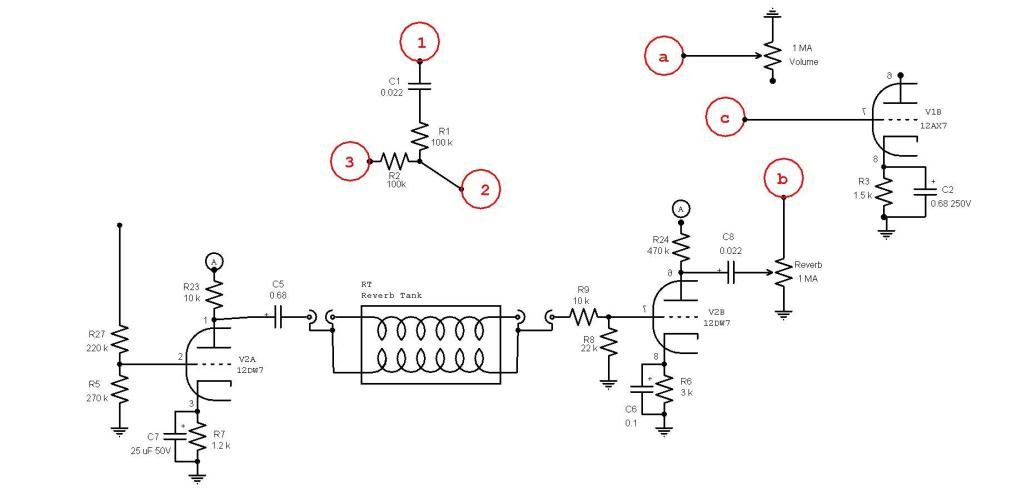Hi all, I have been working on a project amp with some success. I have everything working properly except my reverb! This is an idea used by Swart, and I tried to get the same effect. The circuit is Gibson Scout all the way except with modern tubes essentially. The tank is high impedance 8FB3C1C and it is cap-coupled.
Currently I have dry signal only but if I tap the reverb tank, the 'splashing' sound comes through the speaker which leads me to believe there is either phase cancellation or some other problem with the driver/send (ie. the 12AU side).
Does anyone have any advice? I have come up empty at some other forums and I took the amp to 2 techs in my town who were stumped.
Thanks!

Currently I have dry signal only but if I tap the reverb tank, the 'splashing' sound comes through the speaker which leads me to believe there is either phase cancellation or some other problem with the driver/send (ie. the 12AU side).
Does anyone have any advice? I have come up empty at some other forums and I took the amp to 2 techs in my town who were stumped.
Thanks!


Comment